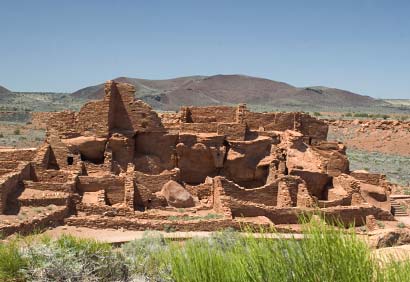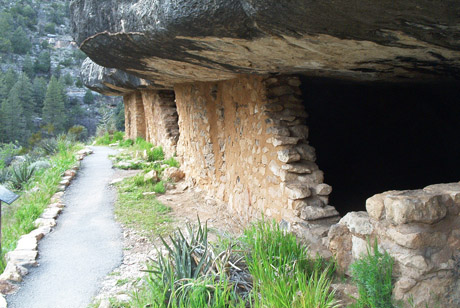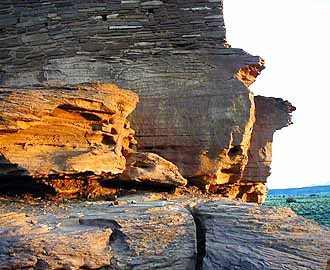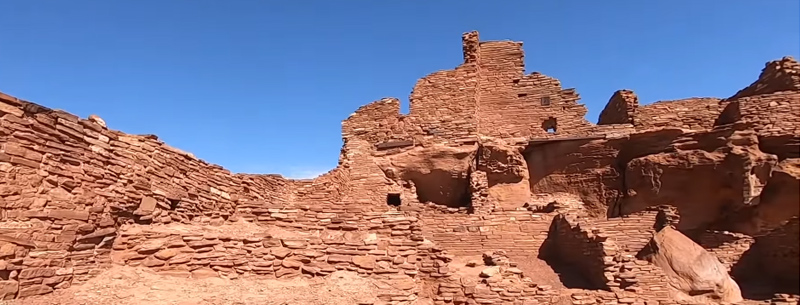Ancient Indian Ruins & Cliff Dwellings in Flagstaff AZ
Evidence shows that prehistoric Native Americans occupied the Flagstaff region for thousands of years. The most evident is the ancient Indian Ruins of the Sinagua Indians. Flagstaff, Arizona is blessed with several of these well-preserved ruins within very close driving distance of downtown Flagstaff.
Ancient Pueblos of Wupatki and cliff dwellings in Walnut Canyon are only minutes away and are open to the public. These sites exemplify what life must have been like for the Sinagua Indians up to about 1400 when they mysteriously disappeared. Archaeological theories confirm the stories and traditions of ancient civilizations.
Today’s Native American Indian Tribes still have strong sacred ties to these places and many believe the Sinagua are the ancestors of the many existing Tribes in Northern Arizona. Enjoy these Indian Ruins, but protect them as gifts to future generations.
Wupatki National Monument
Little did they know they were leaving a gift to the world for an eternity of enjoyment. The Sinagua Indians arrived in the area in about 1100AD and groups built Pueblo Villages in the places known today as Northern Arizona and New Mexico. Several Pueblos were built within the Wupatki National Monument of which the largest (85-100 people) was the Wupatki Pueblo. Others were the Nalakihu, Citadel, Lomaki, and Wukoki Pueblos.

Sinagua was a name given by the Spanish and means “Sin” (without) and “agua” (water). The Sinagua were agricultural people and gifted artisans as evidenced by artifacts they left behind. Trade networks were established and Wupatki Pueblo flourished as a meeting place of native groups of different cultures. For mysterious reasons, the Sinagua Indians left the area around 1250AD. Today’s Hopi and Navajo Indian Tribes are believed to be Sinagua descendants.
No doubt, ceremonies, and tribal rituals have been handed down over centuries. Crafts, pottery, and weavings today are deeply rooted in the past. The Sinaguans not only gifted customs to their descendants but also left these well-preserved rock-formed dwellings as evidence of their existence.
Wupatki and the other Pueblos within Wupatki National Monument are ancient treasures to be enjoyed and protected. When you visit, sit back and imagine what the world in this area was like over 1000 years ago. And imagine what the Sinaguans would think if they were here today. Wupatki is forever to be remembered and cared for, but never to be abandoned.
Walnut Canyon
Ancient dwellings of the Sinagua. Between 1100 and 1250, Walnut Canyon was home to several hundred Sinagua Indians that built cliff dwellings into the alcoves of the canyon walls. About 80 cliff dwellings were built throughout Walnut Canyon as shelter from the elements. Under the overhangs, these ancient natives constructed three side walls of rock and mud masonry with the backside of the alcove walls acting as the fourth wall. The rock ledges served as the dwelling floor. It is believed that the Sinagua Indians migrated from the Sunset Crater area just north of Flagstaff when volcanic eruptions made that land virtually uninhabitable. As skilled farmers, the waters from Walnut Creek that fed their new canyon homemade soil fertile and ideal for growing crops.

The Sinagua mysteriously left Walnut Canyon about 1250. Many believe they integrated with other ancient Indian tribes and were the ancestors of today’s Hopi and Navajo Native Americans. The Sinagua Indians left their cliff dwellings and artifact treasures as gifts to the world giving tourists that visit the Walnut Canyon National Monument an insight into past ancient times that can only be imagined.
Take a step back in time. Bring your spirit of adventure and hiking shoes. There are two trails or you can take a ranger-guided hike. The Rim Trail is fairly level and easy with great canyon views across a 3/4 mile round trip. The Island Trail is a more strenuous one-mile round trip that descends into the canyon to experience 25 cliff dwellings. A museum and picnic area are available to visitors. Check the Walnut Canyon National Monument website for schedules and fees.
Directions To Walnut Canyon. Walnut Canyon National Monument is located about 7.5 miles southeast of Flagstaff, Arizona. Take Interstate 40 East and exit south at Exit 204. Continue south on Exit 204 for about 3 miles to the canyon rim. For the nearest lodging, see Flagstaff hotels or Flagstaff Bed and Breakfast Inns. Vacation Cabins and Vacation Homes are ideal for longer stays in Flagstaff.
Wukoki Ruins
The Wukoki Pueblo Ruins are just one of several ancient pueblo communities within Wupatki National Monument that were inhabited by The Sinagua Indians from about 1100AD to 1250AD when they mysteriously left the area. Other pueblo sites within the Monument include Wupatki, Citadel, Nalakihu, and Lomaki.

